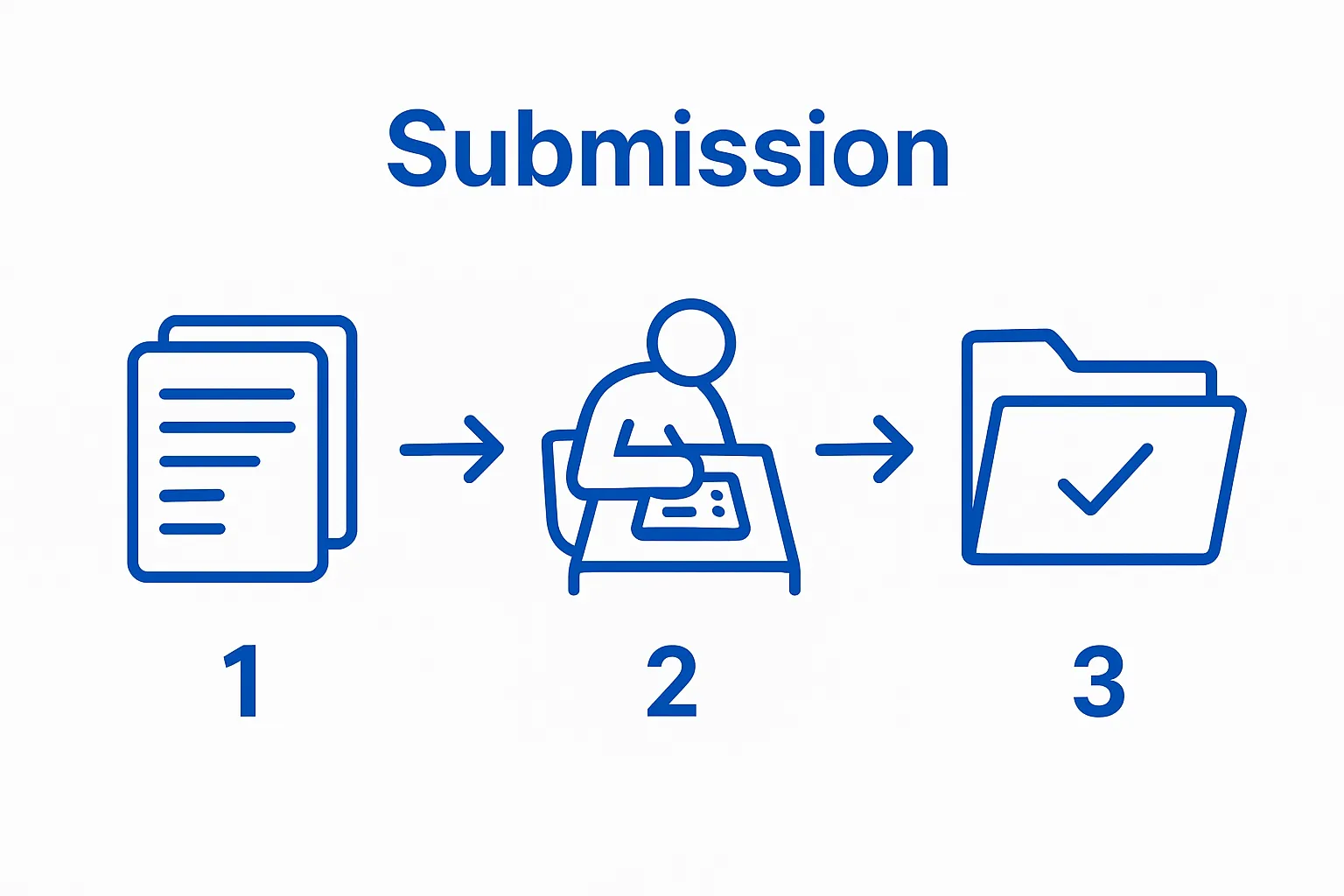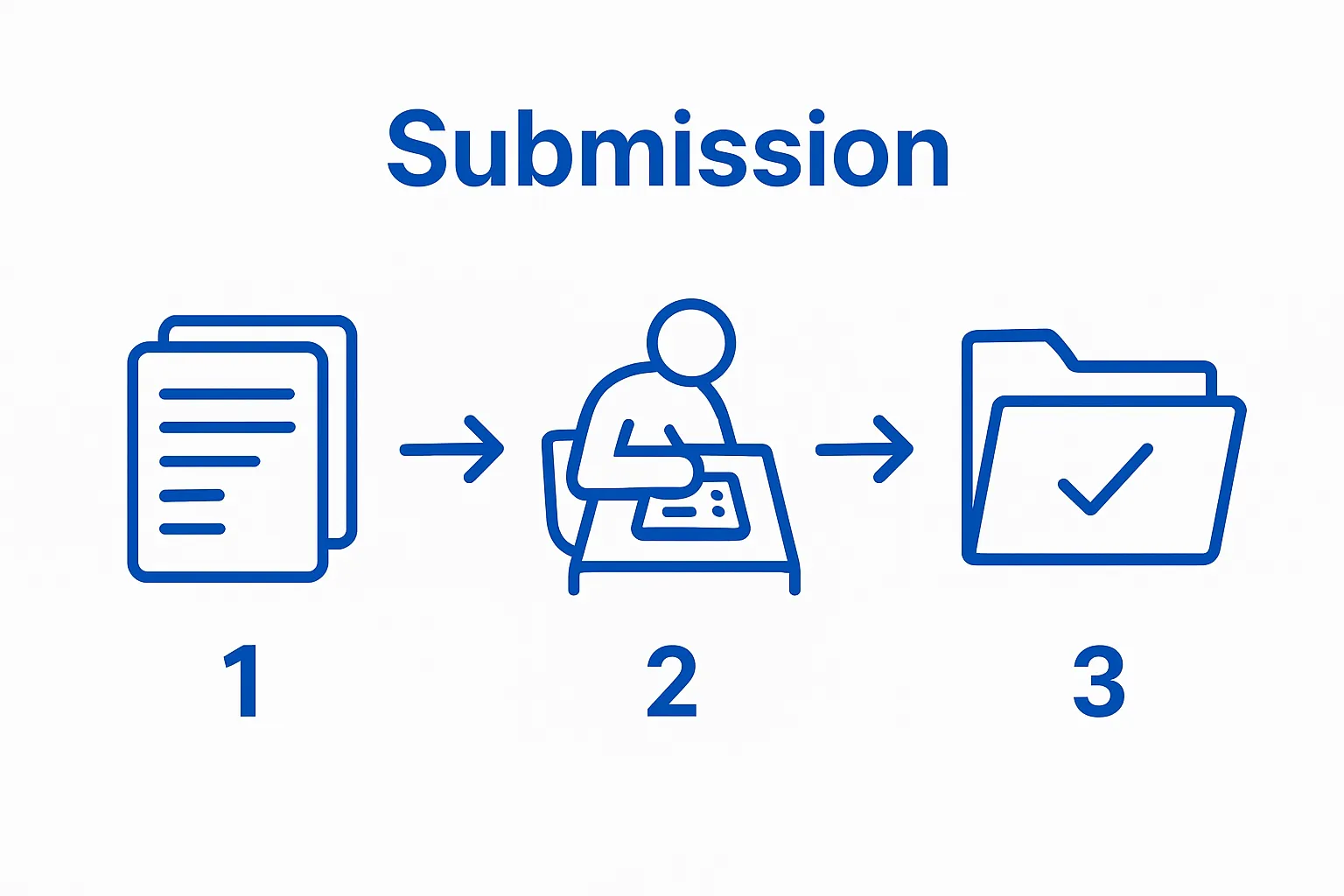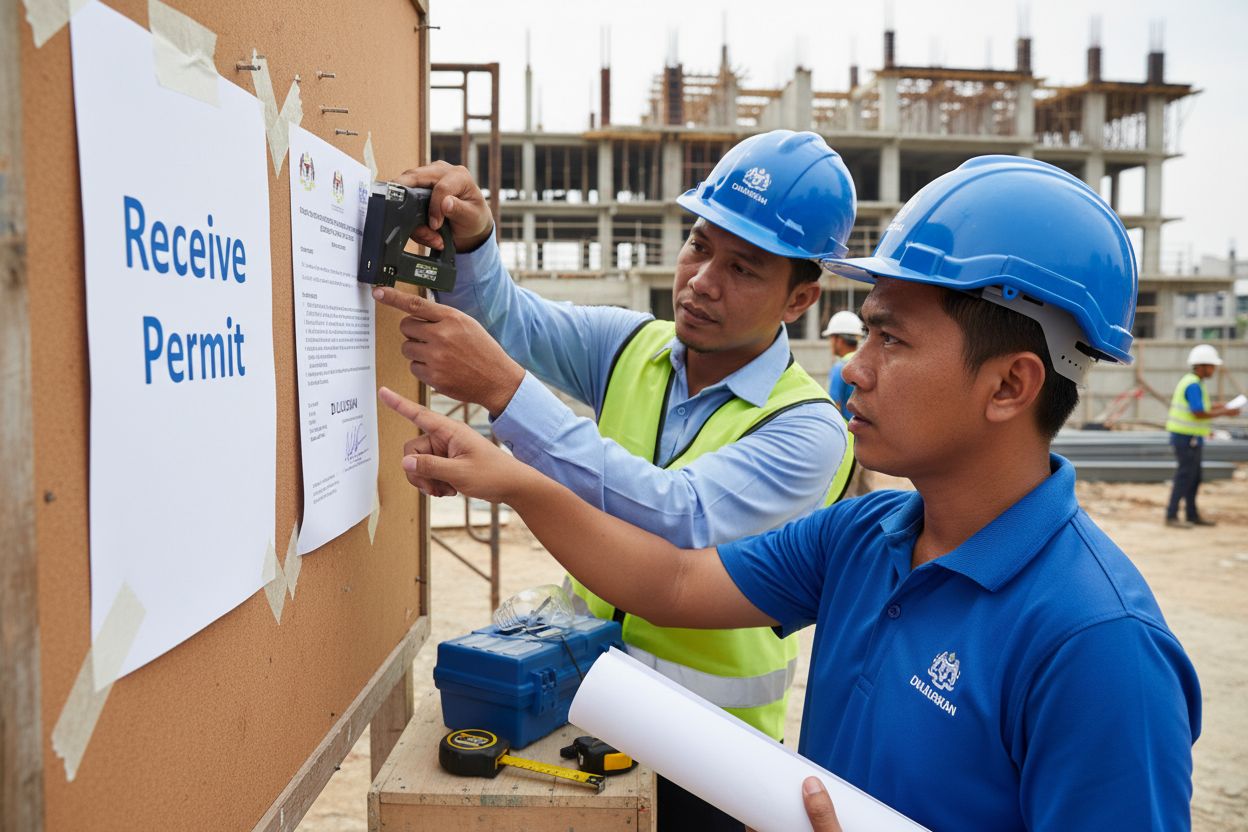
Blog
Navigate the Building Permit Process Malaysia Efficiently | RumahHQ

Applying for a building permit in Malaysia is often seen as a bureaucratic maze. Many assume it is impossible to avoid delays and piles of paperwork, but get this. One missing document can result in automatic rejection and set your project back by weeks or even months. Yet, the real surprise is how a well-organised file of precise documents and clear forms can transform the entire process into something remarkably straightforward and even predictable. Want the quickest route to approval? It all begins long before you walk into the council office.
Table of Contents
Quick Summary
| Key Point | Explanation |
|---|---|
| 1. Gather critical documentation | Collect original property documents and technical drawings to support your building permit application. |
| 2. Complete application forms accurately | Fill in all details in the standardized forms, ensuring clarity and correctness to avoid delays. |
| 3. Organise submission meticulously | Arrange all documents logically, and confirm submission methods and fees with local authorities. |
| 4. Maintain open communication | Respond promptly to queries from municipal authorities to facilitate a smoother review process. |
| 5. Verify compliance after receiving permit | Review permit conditions carefully and ensure adherence to all regulations during construction. |
Step 1: Gather Required Documentation for Application
Successfully navigating the building permit process in Malaysia begins with meticulous documentation preparation. Proper document collection is the foundation of a smooth application journey, determining whether your permit request moves forward efficiently or encounters unnecessary delays.
Documentation gathering requires strategic organization and comprehensive understanding of local municipal requirements. Start by securing original copies of critical property documents, which serve as the backbone of your building permit application. These typically include your master title document proving legal property ownership, detailed site plans drawn to scale, and comprehensive architectural blueprints endorsed by a registered professional.
In Malaysia, municipal authorities like the Pihak Berkuasa Tempatan (Local Authority) have specific documentation requirements. According to Kementerian Kerja Raya Malaysia, you will need precise technical drawings that demonstrate precise measurements, structural integrity, and compliance with national building regulations. These documents must showcase comprehensive details including:
- Property boundaries and exact land dimensions
- Proposed building footprint and total constructed area
- Detailed elevation drawings
- Structural engineering specifications
Engaging a professional architect or licensed engineer becomes crucial at this stage. These experts understand intricate local building codes and can prepare documents that meet stringent municipal standards. They will help you create technically accurate drawings that showcase compliance with safety regulations, zoning requirements, and structural guidelines.
Beyond technical documentation, prepare additional supporting paperwork including your personal identification documents (such as MyKad or passport), proof of land ownership, and recent property assessment documents. Local authorities require these to verify your legal right to undertake construction.
Thoroughness is paramount. Double-check every document for accuracy, ensuring all measurements are precise, signatures are original, and professional endorsements are current.

 Missing or incomplete documentation can result in automatic application rejection, causing significant project delays and potential financial setbacks.
Missing or incomplete documentation can result in automatic application rejection, causing significant project delays and potential financial setbacks.
As a final verification step, consider scheduling a preliminary consultation with your local municipal office.
Below is a checklist table to help applicants ensure they have gathered all essential documents before applying for a building permit in Malaysia.
| Document Type | Description | Who Must Provide | Verified by Professional? |
|---|---|---|---|
| Master Title Document | Proof of legal ownership of the property | Property owner | Not required |
| Site Plan (to scale) | Shows property boundaries and land dimensions | Architect/Engineer | Yes |
| Architectural Blueprints | Detailed plans endorsed by a registered architect | Architect | Yes |
| Structural Engineering Specs | Technical documentation outlining building integrity | Engineer | Yes |
| Personal Identification | MyKad (Malaysian ID) or passport | Owner/applicant | Not required |
| Proof of Land Ownership | Land title, purchase agreement, or grant documents | Property owner | Not required |
| Recent Assessment Bill | Latest property tax or assessment payment slip | Property owner | Not required |
| Many local authorities offer guidance sessions where officials can review your initial documentation, providing specific feedback and highlighting any potential issues before formal submission. This proactive approach can save weeks of potential back-and-forth communication. |
Remember, comprehensive and professionally prepared documentation transforms a potentially complex permit application into a streamlined process. Invest time in careful preparation, and you’ll significantly increase your chances of a successful building permit approval.
Step 2: Complete Relevant Building Permit Application Forms
After meticulously gathering your documentation, the next critical phase in Malaysia’s building permit process involves completing application forms with precision and care. This step transforms your project from conceptual planning into an official municipal submission, requiring careful attention to detail and systematic approach.
Building permit application forms in Malaysia are comprehensive documents that demand thorough and accurate information. Local authorities like Pihak Berkuasa Tempatan (PBT) require standardized forms that capture extensive project details. According to Kementerian Kesejahteraan Bandar, Perumahan dan Kerajaan Tempatan, these forms typically encompass multiple sections covering project specifics, property details, and technical specifications.
Begin by obtaining the official application forms directly from your local municipal council. While many municipalities now offer digital downloads, some still require physical collection. Ensure you secure the most recent version of the form to avoid potential processing delays.
The application form will require detailed information including:
- Complete property location and cadastral details
- Proposed construction type and total built area
- Estimated project duration and construction phases
- Architect and engineer registration numbers
- Detailed contact information for all project stakeholders
Handwriting must be clear, legible, and in permanent ink. If possible, type the form to eliminate any potential misunderstandings caused by illegible handwriting. Each section demands absolute accuracy technical details about your proposed construction.
Professional assistance becomes invaluable during this stage. Consider engaging a local permit consultant or your project architect who understands municipal requirements intimately. They can help you navigate complex form sections, ensuring every field is completed correctly and no critical information is overlooked.
Pay special attention to supplementary declaration sections. These often require signed statements confirming your commitment to adhere to local building codes, environmental regulations, and safety standards. Falsifying or misrepresenting information can result in immediate application rejection and potential legal consequences.
Before submission, create multiple photocopies of the completed form. Retain one set for your personal records and prepare additional copies for different municipal departments. This practice provides a comprehensive paper trail and helps track your application’s progress.
As a final verification step, schedule a preliminary review with municipal officials. Many local councils offer consultation services where they can preview your application, identifying potential issues before formal submission. This proactive approach can save weeks of potential bureaucratic back-and-forth.
Remember, completeness and accuracy are your greatest allies in the building permit application process. A meticulously prepared application demonstrates professionalism and increases your chances of swift approval.
Step 3: Submit Application and Pay Necessary Fees
Submitting your building permit application represents a pivotal moment in your construction journey, transforming months of preparation into official municipal processing. Precise submission and fee payment are critical steps that determine the trajectory of your project’s approval timeline.
Before submission, organize all documentation meticulously. Arrange your completed application forms, supporting documents, and technical drawings in a logical, easily reviewable sequence. According to Kementerian Kerja Raya Malaysia, local authorities prefer submissions that demonstrate clear organization and comprehensive preparation.
Choose your submission method carefully. Most Malaysian municipal councils now offer multiple submission channels including:
- Physical submission at local government offices
- Online digital submission platforms
- Registered postal submission with tracking
Digital submissions are increasingly preferred, offering faster processing and immediate documentation tracking. However, some municipalities still mandate physical document submission, particularly for complex construction projects. Confirm the exact submission requirements with your specific local Pihak Berkuasa Tempatan (PAT) office.
The following table summarises available methods for submitting your building permit application in Malaysia, along with their main advantages and important considerations.
| Submission Method | Main Advantages | Important Considerations |
|---|---|---|
| Physical (in-person) | Direct confirmation, in-person queries | May be required for certain cases; queuing likely |
| Online/Digital Platform | Faster processing, receipt tracking | Ensure correct document format and digital signatures |
| Registered Postal Service | Submission without travel, postal documentation | Risk of postal delays or loss; use tracking |
Fee calculation involves multiple variables including property size, construction type, and total built area. Municipal authorities assess fees based on standardized rate structures that vary across different regions. Prepare to pay through approved payment methods such as bank transfer, cashier’s order, or direct counter payment.
Bring multiple forms of identification during submission. Official government-issued documents like MyKad or passport are essential. If submitting through a representative, ensure you have properly authenticated authorization letters and copies of identification.
When paying permit application fees, request and retain official receipts and payment acknowledgments. These documents serve as crucial evidence of your submission and become important references throughout the approval process. Note the reference number or tracking code provided during submission, as this will be your primary means of following your application’s progress.
Be prepared for potential additional requirements. Some municipalities might request supplementary documentation or clarifications during the initial review. Maintaining open communication channels and responding promptly to any queries can significantly expedite your application.
Consider scheduling a follow-up consultation approximately one week after submission. This proactive approach allows you to confirm receipt of your application and address any potential issues early in the process. Many municipal offices appreciate applicants who demonstrate active engagement and commitment to proper procedure.
Remember that patience and thoroughness are your greatest assets. Building permit applications in Malaysia can take several weeks to months, depending on project complexity and municipal workload. Maintaining organized records, staying responsive, and understanding the process will help you navigate this critical stage successfully.
Step 4: Await Feedback and Address Any Queries
After submitting your building permit application, entering the feedback and review phase requires strategic patience and proactive communication. This critical stage determines whether your application moves forward smoothly or requires additional refinement. Municipal authorities will meticulously examine every aspect of your submission, potentially requesting clarifications or modifications.
According to Kementerian Perumahan dan Kerajaan Tempatan, the review process can vary significantly depending on project complexity, municipal workload, and the comprehensiveness of your initial submission. Establishing a systematic approach to tracking and responding to feedback becomes paramount.
Prepare a dedicated communication strategy that includes:
- Designating a primary point of contact
- Creating a systematic file management system
- Setting up regular follow-up intervals
Maintaining open and professional communication channels is crucial during this phase. Municipal reviewers may contact you through various means including official letters, email, or telephone. Respond promptly and courteously to every inquiry, providing requested information quickly and comprehensively.
Documentation becomes your strongest ally. Create a comprehensive tracking system for all communications, keeping copies of every correspondence, query, and response. This approach not only demonstrates your professionalism but also provides a clear audit trail should any disputes arise later in the process.
Expect potential requests for additional technical documentation. These might include more detailed structural drawings, environmental impact assessments, or clarifications about specific construction methodologies. Your previously prepared comprehensive documentation will prove invaluable during this stage.
Professional guidance can significantly streamline this process. Consider retaining your project architect or a permit consultation expert who can interpret technical queries and draft precise, professional responses. Their expertise can help navigate complex municipal requirements and potentially accelerate the review process.
Be prepared for potential scenario variations. Some municipal offices might require in-person consultations or site inspections as part of their review process. Flexibility and willingness to provide additional information can demonstrate your commitment to compliance and smooth project progression.
Patience is more than a virtue in this stage – it is a strategic approach. Review processes can take weeks or even months, depending on the complexity of your project and the current workload of municipal authorities. Avoid aggressive follow-ups, but maintain consistent, professional communication.
As a final verification step, establish a systematic follow-up schedule. If you have not received feedback within the standard processing time (typically 4-6 weeks), prepare a polite, professional inquiry. Your proactive approach signals serious intent and can help keep your application moving through bureaucratic channels.
Remember, each query is an opportunity to demonstrate your project’s merit and your commitment to meeting municipal standards. Approach each interaction with professionalism, preparedness, and patience.
Step 5: Receive Permit and Verify Compliance with Regulations
Receiving your official building permit marks a significant milestone in your construction journey, transforming months of preparation into tangible approval. This final administrative step requires meticulous attention to detail and strict adherence to municipal regulations. Your permit represents more than just a document – it is a comprehensive authorization outlining precise construction parameters and legal obligations.
According to Kementerian Kerja Raya Malaysia, the permit document will contain critical information including specific construction guidelines, approved project specifications, and mandatory compliance requirements. Carefully review every section of the permit, understanding each stipulation and its potential implications for your construction project.
Upon receipt, prepare a comprehensive verification process that includes:
- Thorough examination of all permit conditions
- Cross-referencing approved plans with current project specifications
- Identifying specific regulatory compliance requirements
Display the original permit prominently at your construction site, as most Malaysian municipalities mandate this requirement. The visible permit serves multiple purposes: demonstrating legal authorization, providing reference for inspectors, and ensuring transparency throughout the construction process.
Pay exceptional attention to time-sensitive conditions within the permit. Many municipal approvals include specific timeframes for project commencement, completion, and mandatory interim inspections. Failing to adhere to these timelines can result in permit revocation or additional administrative complications.
Engage your project architect or a permit compliance consultant to help interpret complex regulatory language. Professional expertise can help you understand nuanced requirements and potential future implications of each permit condition. They can assist in developing a comprehensive compliance strategy that anticipates potential municipal concerns.
Establish a systematic documentation process. Create multiple certified copies of your permit, storing them securely both digitally and physically. Maintain a dedicated file that includes the original permit, correspondence with municipal authorities, and all related technical documentation.
Be prepared for potential site inspections. Municipal authorities may conduct random or scheduled assessments to verify that construction precisely matches approved plans. Maintaining meticulous records and ensuring on-site compliance will help you navigate these inspections smoothly.
Understand that your permit is not a static document but a dynamic authorization with ongoing obligations. Significant design modifications or scope changes may require additional approvals or permit amendments. Proactively communicate with municipal authorities if any alterations become necessary during your construction process.
Finally, recognize that your building permit represents a legal contract between you and local government. Treat it with the utmost respect, understanding that compliance is not just a bureaucratic requirement but a commitment to safety, community standards, and professional integrity.


Frustrated by Malaysia’s Complex Building Permit Process? Discover an End-to-End Solution
Navigating Malaysia’s building permit requirements can quickly turn into a daunting task. Gathering precise documentation, completing intricate municipal forms and handling back-and-forth queries leave many homeowners feeling overwhelmed and uncertain. Delays and missing paperwork often threaten your timeline and peace of mind. If you want to avoid costly errors and ensure your new home or renovation starts as planned, using a trusted local partner becomes critical.


Choose RumahHQ to handle every step of your project. Our platform offers clear guidance on documentation, expert help with PBT compliance and a transparent process from permit to construction. With free design consultations and fixed-price packages, you gain confidence at each milestone. Act now to move your project forward without unnecessary hold-ups. Visit RumahHQ’s main site today to start your enquiry and experience a seamless route to building approval.
Frequently Asked Questions
What documents are required for a building permit application?
To apply for a building permit, you typically need the master title document, site plans drawn to scale, architectural blueprints endorsed by a registered professional, and supporting personal identification documents. Ensure to check with your local municipal authority for specific requirements.
How do I complete the building permit application forms correctly?
Obtain the latest version of the application forms from your local municipal council. Fill in detailed information clearly and accurately, ensuring that all sections are complete. Consider seeking the assistance of a local permit consultant or your project architect to navigate complex sections.
What should I do after submitting my building permit application?
After submission, maintain open communication with the municipal authorities. Track all feedback and responses from them, and be prepared to provide any additional documentation they request. It’s also advisable to follow up about a week after submitting your application to check its status.
What should I do if I receive queries during the permit review process?
Respond promptly and comprehensively to any queries from municipal reviewers. Keep thorough documentation of all communications, and consider retaining professional assistance, such as a project architect, to help address technical questions effectively.
Recommended
Source link
kontraktor rumah
bina rumah
pinjaman lppsa
pengeluaran kwsp
spesifikasi rumah
rumah batu-bata
pelan rumah
rekabentuk rumah
bina rumah atas tanah sendiri
kontraktor rumah selangor
rumah banglo




